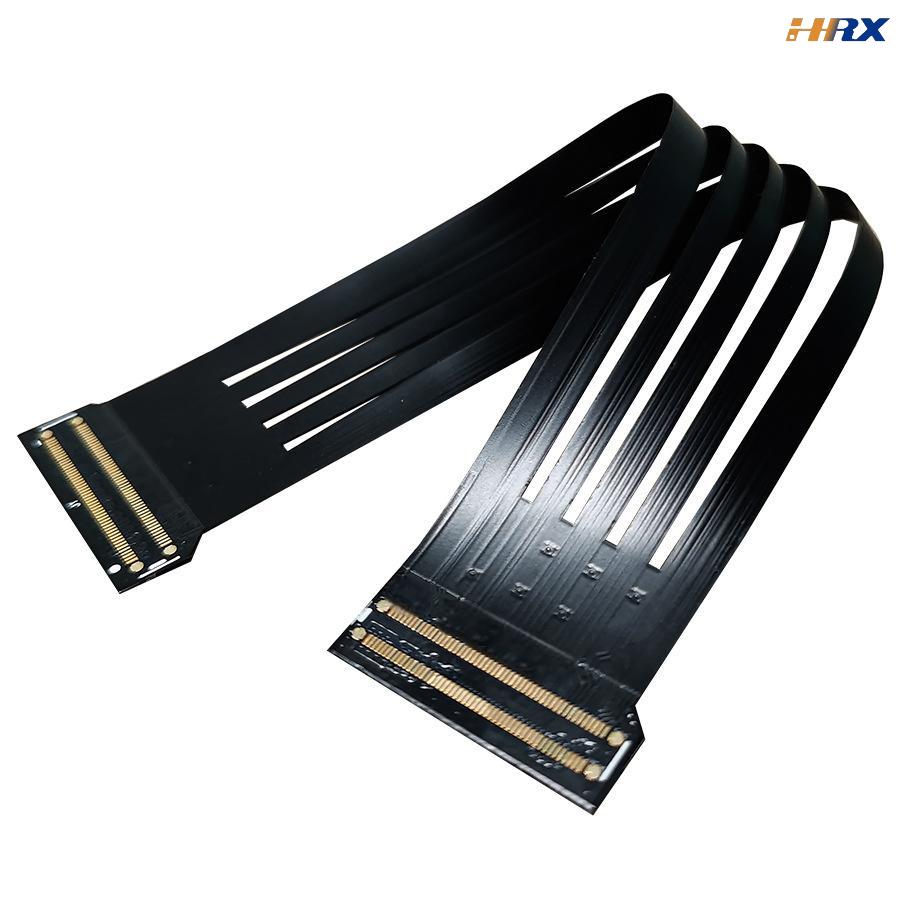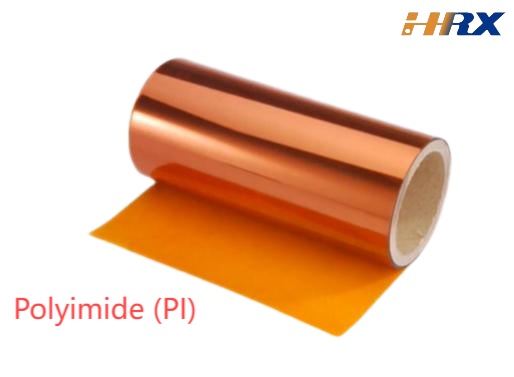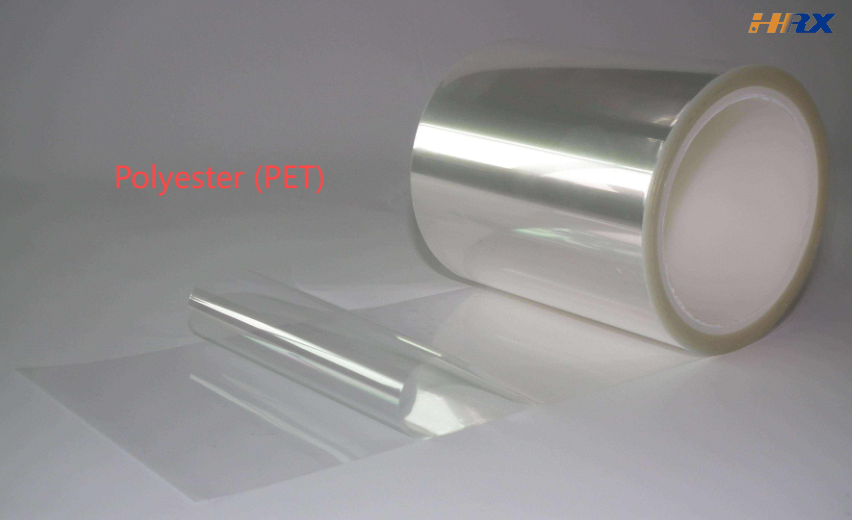Search
Unveiling the Secrets of FPC Flexural Life Performance
- Mar 22,2025
-
Share
In the fast - paced world of electronics, Flexible Printed Circuits (FPCs) have emerged as a cornerstone technology. Their ability to be bent, folded, and twisted while maintaining electrical functionality has made them indispensable in a wide range of applications, from the sleek designs of smartphones and wearables to the intricate inner workings of medical devices and aerospace systems. However, understanding and optimizing the flexural life performance of FPCs is a complex and crucial task that involves multiple factors, from material selection to manufacturing processes and environmental considerations.
Factors Influencing FPC Flexural Life Performance

Material - related Factors
Base Material
Polyimide (PI): Widely used as the base material for FPCs, PI offers excellent thermal stability, chemical resistance, and mechanical strength. Its high glass - transition temperature (Tg) allows it to maintain its properties even at elevated temperatures, which is crucial for applications where the FPC may be exposed to heat during operation or manufacturing processes. For example, in automotive electronics, where under - hood temperatures can reach high levels, PI - based FPCs are preferred. The thinner the PI layer, the more flexible the FPC can be, but there is a trade - off with peel strength and overall durability.

Polyethylene terephthalate (PET): PET is another common base material, especially in applications where cost - effectiveness is a priority. It has good flexibility and is relatively easy to process. However, it has a lower Tg compared to PI, making it less suitable for high - temperature applications. PET - based FPCs are often found in consumer electronics such as low - end smartphones and some wearable devices.

Copper Foil
Type: There are two main types of copper foil used in FPCs - electrolytic copper foil and rolled - annealed (RA) copper foil. Electrolytic copper foil is produced by an electrolytic process and has a relatively rough surface. RA copper foil, on the other hand, is produced by rolling and annealing, resulting in a smoother surface. The smoother surface of RA copper foil provides better adhesion to the base material and also improves the flexural performance. RA copper foil is known for its superior bending resistance compared to electrolytic copper foil, making it a popular choice for applications that require frequent bending, such as in the hinges of foldable smartphones.
Thickness: The thickness of the copper foil significantly impacts the flexural life of the FPC. Thinner copper foils are more flexible and can withstand more bending cycles before failure. However, they also have lower current - carrying capacity. In applications where space is limited and high - density interconnects are required, such as in miniaturized medical devices, thinner copper foils are often used. For example, a 12 - um thick copper foil may be used in a FPC for a hearing aid, where the device needs to be small and flexible.
Adhesive
Type: Epoxy - based adhesives are commonly used in FPCs due to their good adhesion properties, flexibility, and chemical resistance. Acrylic adhesives are also used in some cases, but they generally have lower flexibility compared to epoxy adhesives. The choice of adhesive can affect the overall flexibility of the FPC. For instance, in a FPC used in a wearable fitness tracker, which needs to be highly flexible to conform to the body, an epoxy - based adhesive with high flexibility would be a better choice.
Thickness: A thinner adhesive layer can contribute to better flexural performance as it reduces the overall thickness of the FPC and minimizes stress concentration during bending. However, if the adhesive layer is too thin, it may not provide sufficient adhesion, leading to delamination. Material manufacturers often strive to optimize the adhesive thickness while maintaining good peel strength. For example, in the production of FPCs for smartwatches, where both flexibility and adhesion are critical, the adhesive thickness is carefully controlled.
Design - related Factors
Bending Radius
The bending radius is a crucial design parameter that has a direct impact on the flexural life of the FPC. A smaller bending radius subjects the FPC to higher stress, which can lead to premature failure. In static bending applications, a general rule of thumb is that the bending radius should be at least 10 times the thickness of the FPC. In dynamic bending applications, where the FPC is repeatedly bent, the bending radius should be even larger, typically 20 times or more the thickness of the FPC. For example, in a foldable tablet, the FPC in the hinge area needs to be designed with a large enough bending radius to ensure that it can withstand thousands of folding and unfolding cycles without failure.
Symmetry of the FPC Structure
A symmetric FPC structure, where the materials on both sides of the copper foil are balanced in terms of thickness and mechanical properties, is more resistant to bending - induced stress. When a FPC is bent, a symmetric structure helps to distribute the stress evenly across the cross - section, reducing the likelihood of delamination or cracking. For example, in a FPC used in a 360 - degree foldable laptop, the design ensures that the PI layers and adhesive layers on both sides of the copper foil are of equal thickness and have similar mechanical properties.
Routing Design in the Bend Area
The layout of conductive traces in the bending area of the FPC is also important. Traces should be designed to be as straight as possible in the bend area, and sharp corners or sudden changes in trace width should be avoided. Sharp corners can cause stress concentration, leading to early failure of the copper traces. Additionally, the distance between traces should be optimized to prevent electrical short - circuits during bending. In a FPC for a robotic arm's control system, where the FPC is constantly bent during the arm's movement, the routing design in the bend area is carefully planned to ensure reliable electrical performance.
Manufacturing - related Factors
Curing Process of the Adhesive
The curing process of the adhesive plays a vital role in determining the adhesion strength and overall performance of the FPC. If the adhesive is not fully cured, it may not provide sufficient adhesion, leading to delamination during bending. The curing temperature and time need to be carefully controlled according to the adhesive manufacturer's specifications. For example, in a manufacturing process for FPCs using epoxy adhesives, the curing temperature may be set at 150 - 180°C for a specific duration, such as 30 - 60 minutes, to ensure proper curing.
Pressing Process
During the pressing process, which is used to bond the different layers of the FPC together, it is essential to ensure that the adhesive is evenly distributed and that there are no voids or air bubbles. Voids or air bubbles in the adhesive layer can act as stress concentrators during bending, reducing the flexural life of the FPC. High - quality pressing equipment and proper process control are required to achieve a uniform and void - free bond. In a FPC manufacturing facility, advanced pressing machines with precise temperature, pressure, and time control are used to ensure the quality of the pressing process.
Surface Treatment of Copper Foil
The surface treatment of the copper foil can affect its adhesion to the adhesive and the overall flexural performance of the FPC. A common surface treatment is blackening, which increases the surface roughness of the copper foil, improving adhesion. However, the composition and quality of the blackened layer need to be carefully controlled. If the blackened layer is too thick or has an improper composition, it may lead to brittleness and reduced flexural life. In the production of FPCs for high - end consumer electronics, the surface treatment of the copper foil is optimized to achieve the best balance between adhesion and flexural performance.
Environmental Factors
Temperature
High - temperature Effects: High temperatures can cause the materials in the FPC to expand and soften. This can lead to changes in the mechanical properties of the FPC, such as reduced stiffness and increased creep. In extreme cases, high temperatures can cause the adhesive to degrade, resulting in delamination. For example, in industrial applications where FPCs are used in equipment operating in hot environments, such as in steel mills or foundries, special heat - resistant FPCs are required. These FPCs may use high - temperature - resistant materials and adhesives.
Low - temperature Effects: Low temperatures can make the materials in the FPC become brittle, reducing their ability to withstand bending. The copper foil may crack more easily, and the adhesive may lose its flexibility. In applications in cold climates, such as in outdoor sensors or cold - storage equipment, FPCs need to be designed to withstand low temperatures. This may involve using materials with good low - temperature flexibility, such as certain types of PI and adhesives.
Humidity
High humidity can cause the FPC materials to absorb moisture. This can lead to swelling of the base material, which in turn can cause stress in the FPC during bending. Moisture can also affect the electrical performance of the FPC by increasing the resistance of the conductive traces and potentially causing corrosion. In applications in humid environments, such as in marine electronics or medical devices used in operating rooms with high humidity, FPCs need to be protected against moisture. This can be achieved through the use of moisture - resistant coatings or encapsulation.
Testing Methods for FPC Flexural Life Performance
Bending Fatigue Testing
This is one of the most common methods for evaluating the flexural life of FPCs. A bending fatigue test machine is used to repeatedly bend the FPC at a specific bending radius, angle, and frequency. The number of bending cycles until failure (such as when the resistance of the conductive traces exceeds a certain threshold or when visible cracks or delamination occur) is recorded. The test conditions can be adjusted to simulate different real - world applications. For example, in a test for a FPC used in a mobile phone's slide - out keyboard, the bending radius, angle, and frequency can be set to match the actual usage patterns of the keyboard.
Vibration Bending Testing
Vibration bending testing is used to simulate the FPC's performance in high - frequency dynamic environments. A vibration table is used to apply continuous vibration stress to the FPC, and its fatigue characteristics are observed. This type of testing is particularly relevant for applications where the FPC is subjected to vibrations, such as in automotive engines or industrial machinery. However, it can be challenging to precisely match the vibration conditions to the actual real - world scenarios.
Environmental Chamber Testing
In an environmental chamber, the FPC is subjected to controlled temperature and humidity conditions while being bent or flexed. This allows for the evaluation of how the FPC's flexural life is affected by different environmental factors. For example, a FPC can be tested in a chamber with a temperature range of - 40°C to 85°C and humidity levels from 10% to 95% while being subjected to cyclic bending. This type of testing is crucial for ensuring the reliability of FPCs in applications where they will be exposed to varying environmental conditions.
Strategies for Improving FPC Flexural Life Performance
Optimized Material Selection
Based on the application requirements, carefully select the base material, copper foil, and adhesive. For applications with high - temperature and high - flexure requirements, such as in aerospace electronics, high - quality PI with a high Tg, RA copper foil, and flexible epoxy adhesives should be chosen. In cost - sensitive applications with moderate flexure requirements, PET - based materials may be considered, but with appropriate trade - offs in performance.
Advanced Design Techniques
Design the FPC with an appropriate bending radius, symmetric structure, and optimized routing in the bend area. Use computer - aided design (CAD) software to simulate the bending behavior of the FPC and make necessary design adjustments before manufacturing. For example, in the design of a FPC for a new generation of foldable smartphones, CAD simulations can help in determining the optimal bending radius and trace layout to maximize the flexural life.
Precise Manufacturing Control
Ensure strict control over the manufacturing processes, including the curing and pressing processes. Use high - quality equipment and follow standardized procedures to minimize variations in the manufacturing process. Regularly monitor and maintain the manufacturing equipment to ensure consistent performance. In a FPC manufacturing plant, implementing a quality management system can help in achieving precise manufacturing control.
Environmental Protection
For applications in harsh environments, provide appropriate environmental protection for the FPC. This can include using moisture - resistant coatings, heat - shielding materials, or encapsulation. In outdoor applications, a FPC can be coated with a protective layer that not only resists moisture but also provides some level of UV protection.

Conclusion
The flexural life performance of FPCs is a multi - faceted aspect that is influenced by a wide range of factors, from the materials and design to the manufacturing process and the operating environment. By understanding these factors, employing appropriate testing methods, and implementing strategies for improvement, manufacturers can produce FPCs with enhanced flexural life, ensuring the reliability and longevity of electronic devices in various applications. As technology continues to advance and the demand for more flexible and durable electronics grows, further research and development in this area will be crucial to meet the evolving needs of the market.

Let’s talk! We’ll provide the perfect solution for you!
-
 Huaruixin Electronics mainly produces printed circuit boards as the core business, to provide customers with one-stop solutions for FPC/PCB production, components sourcing and Assembly.
Huaruixin Electronics mainly produces printed circuit boards as the core business, to provide customers with one-stop solutions for FPC/PCB production, components sourcing and Assembly. - WHAT WE DO — PCB Design Solutions — Flex PCB Production — Components Sourcing — FPC&PCB Assembly
- PRODUCTS — Single Sided Flexible Circuits — Double Sided Flexible Circuits — Multilayer Flexible Cirucits — Rigid-Flex Circuits — FPC Assembly — PCB Assembly
- CAPABILITY — FPC Capability — Rigid-Flex Capability — PCB Capability — Assembly Capability
- Copyright © 2024 Shenzhen Huaruixin Electronics Co., Ltd. All Rights Reserved.
- Design By BONTOP


